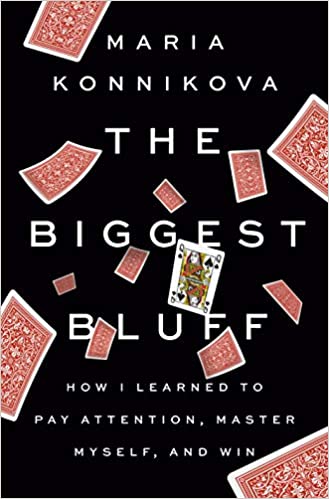You have /5 articles left.
Sign up for a free account or log in.
 The Biggest Bluff: How I Learned to Pay Attention, Master Myself, and Win by Maria Konnikova
The Biggest Bluff: How I Learned to Pay Attention, Master Myself, and Win by Maria Konnikova
Published in June 2020
What if the best way to learn about learning is to play poker? Or maybe to read about learning to play poker?
This is the premise of New Yorker writer (and Columbia psychology Ph.D. trained) Maria Konnikova's new book, The Biggest Bluff.
Konnikova tells how she went in under a year from not knowing how many cards are in a deck to a tournament-winning professional poker player.
The Biggest Bluff is less a book about poker -- although we learn plenty about the subculture of professional poker players -- and more a book on metacognition. Poker, it turns out, is a vehicle for thinking about thinking.
The animating spirit underlying Konnikova's journey from a poker novice to expert is summarized in the advice that her coach, professional poker player Erik Seidel, repeats continuously:
"Less certainty. More inquiry."
In learning how to thrive in the hypercompetitive male-dominated (and incredibly sexist) world of professional poker, Konnikova must absorb many lessons beyond optimal betting, calling and folding strategies.
Over the book's chapters, Konnikova relates how poker uncovers and reveals one's blind spots, biases and mental fault lines.
It is hard to come away from reading The Biggest Bluff without concluding that poker should be integrated into the curriculum. At the very least, it seems as if Centers for Teaching and Learning should think about a faculty learning science reading group where the book is discussed, followed by some low-stakes Texas Hold'em.
CTLs, and the universities in which they are embedded, might want to think about adopting less certainty and more inquiry in their official mission statements.
The Biggest Bluff should be included in any bookshelf on learning about learning.
What are you reading?








